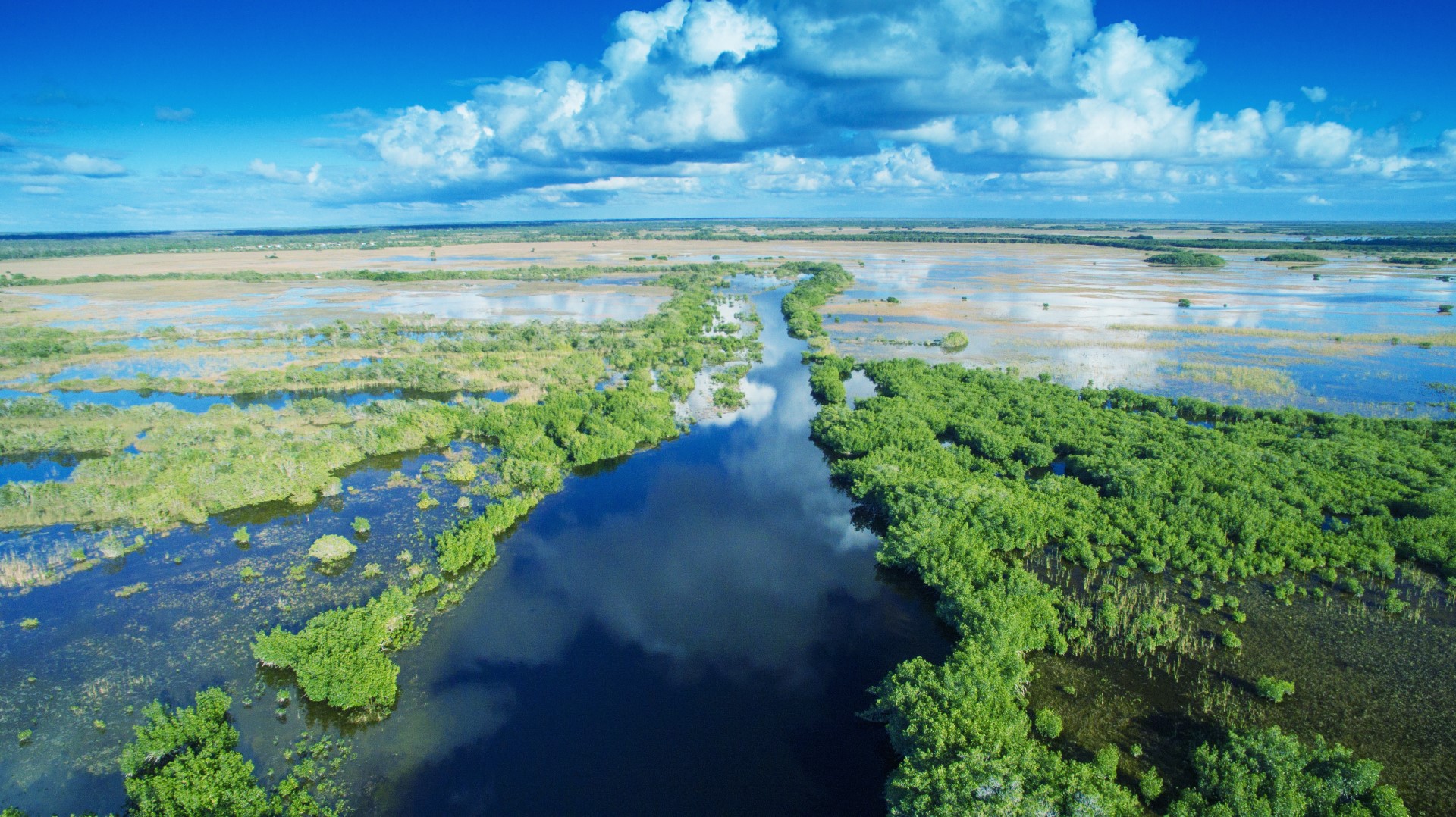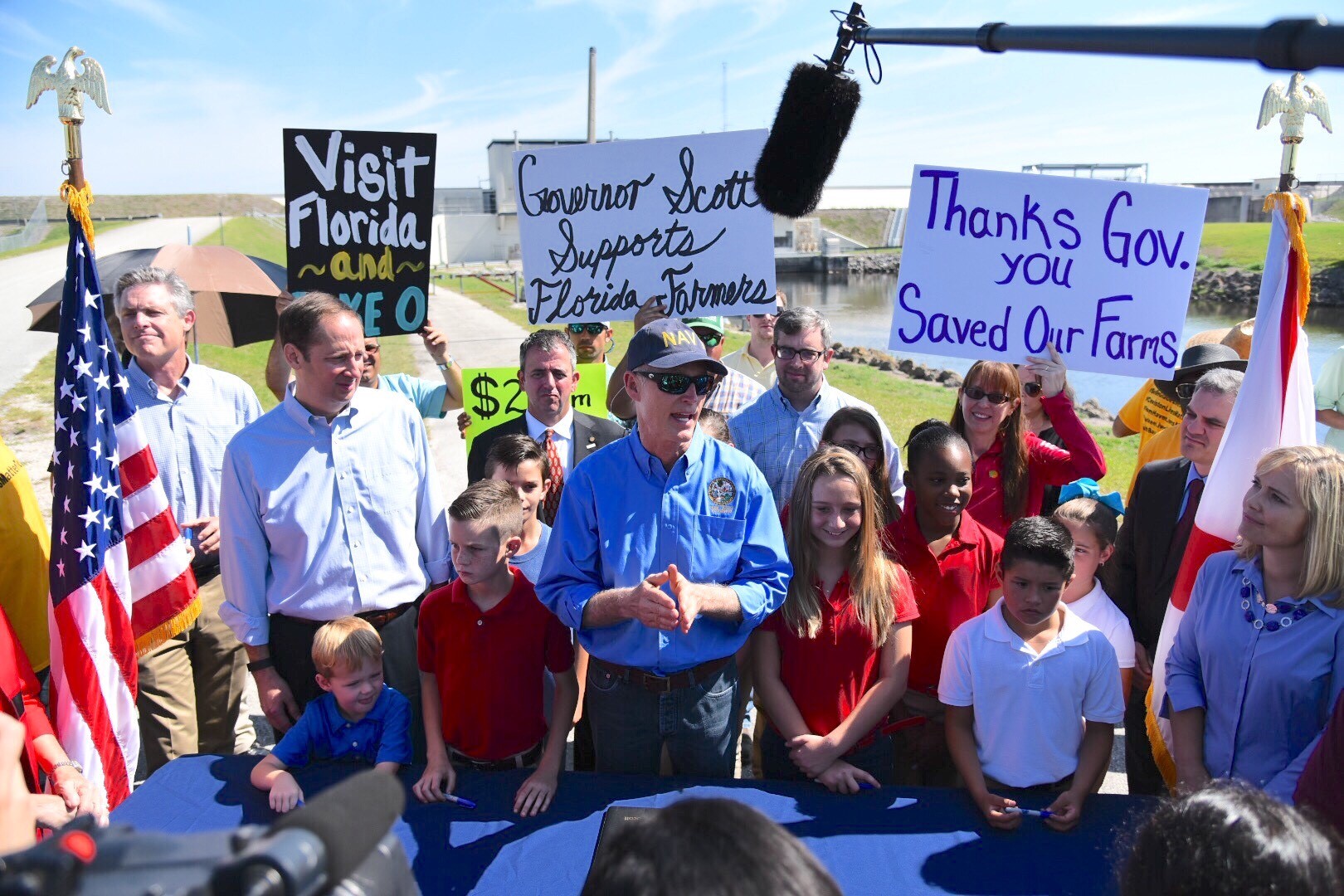
Closing the book on 2017, among the most notable political battles centered on Lake Okeechobee water issues.
While lawmakers reached a compromise earlier in the year, this food fight may be far from over.
Last Session, environmental activists, working with Senate President Joe Negron, hammered out a bill that (at one point) called for buying up to 60,000 acres of working farmland south of Lake O.
But an equally vocal group of Everglades farmers, joined by local leaders and community advocates, strongly opposed the plan, pointing out the negative economic impact that Negron’s land buy would have on the Glades farming community.
What the Legislature ultimately approved – in the form of a somewhat more palatable Senate Bill 10 – was praised by environmental activists, farming interests (including the sugar industry), local and state leaders.
Heralded as a “grand compromise,” SB 10 began the process of building a new southern reservoir, settling the issue once and for all.
Or so many thought.
With a lower price tag than originally proposed, SB 10 called for using only state-owned land, closing the door on eminent domain to take privately-held acreage.
Arguably, it was the most significant victory of Negron’s Senate presidency, paving the way for construction of up to 360,000 acre-feet (an acre of water, 1 foot deep) of water storage, which could help tackle future algae blooms, like those that plagued his district a year earlier.
In June, following a high-profile bill signing on the banks of Lake O, bringing together Gov. Rick Scott, Negron, Everglades Foundation CEO Eric Eikenberg, Glades leaders and others, it seemed as if happy days were here again. With choruses of Kumbaya and hallelujahs ready to break out, construction of the reservoir was about to begin.

All seemed good, right? Wrong.
Since then, a handful of environmental organizations – the Everglades Foundation, the Sierra Club, Bullsugar among others – began raising concerns over the South Florida Water Management District’s modeling used to develop the reservoir.
They just don’t use enough land, the environmentalists say.
As outlined in SB 10, SFWMD developed four models for a southern reservoir for presentation to the Legislature by Jan. 9. Ranging in cost from $1.4 billion to $1.9 billion, each model includes an above-ground storage reservoir on adjacent state-owned land south of Lake O … exactly how the Legislature – led by Negron – first envisioned.
So why now the red flags?
Is it possible that, after a rare legislative success, these environmental groups are seeking further relevance? Or are they so hell-bent on buying land, they will risk a Hail Mary pass to get what they wanted – and lost – in the Legislature?
Perhaps these concerns are less about the survival of the Everglades than they are about the survival of the Everglades Foundation (and its satellite organizations)?
Attempting to quell the rising anger from environmentalist groups, Negron wrote a letter to the SFWMD in early December, asking if it had enough land to construct the reservoir. In response, SFWMD Executive Director Ernie Marks said that the district indeed has more than enough property to do the job.
To follow SB 10, all SFWMD needs to do is construct slightly higher reservoir embankments. In addition, using state-owned lands set out in the bill will also keep costs down, officials said.
Nevertheless, these environmental groups refused to be satisfied, moving the goal posts by demanding more land.
A recent Facebook post from Bullsugar highlighted concerns of the Friends of the Everglades, which allege, among other things, that the SFWMD’s reservoir models violate federal water quality standards.
This tactic is nothing new. Environmentalists have intervened before to block construction of a southern reservoir.
In 2008, the National Resources Defense Council, Sierra Club, and others went to court to stop a similar project. The Everglades Trust, led by the late Thom Rumberger, decried that reservoir as “unnecessary and expensive.”
The suit, along with an ill-fated 2008 U.S. Sugar deal struck with then-Gov. Charlie Crist, succeeded in halting work on the reservoir, which is still virtually unused and available. This idle land became a key talking point in the debate over SB 10.
In January 2017, SFWMD officials publicly challenged the science used by the Everglades for a “study” on a southern reservoir. SFWMD Hydrology and Hydraulics Bureau Chief Akintunde O. Owosina wrote a scathing letter to Everglades Foundation scientist Thomas Van Lent, declaring: “The assumptions you made in the model input were obviously selected to reduce northern storage and create an outcome in favor of southern storage.”
In the end, neither the Legislature nor the SFWMD used the Foundation models – widely denounced as flawed – for SB 10. Instead, they patterned designs after four other district projects, including Scott’s much-heralded Restoration Strategies Water Quality Plan and the C-43 storage reservoir – long supported by environmental groups.
Snatching defeat from the jaws of victory, environmental activists raise these concerns – objecting to the project size and water quality – just as a long-awaited reservoir appears to be finally within reach.
These latest complaints, advanced only six months after signing SB 10, will ring hollow in the halls of the Florida Capitol. And Senate leaders, such as newly-minted Appropriations Chair Rob Bradley (an SB 10 sponsor) will have little interest in revisiting the issue, especially in an election year.
Putting it bluntly, it’s dumb to cast doubt on Negron’s signature policy achievement, but it is also unsurprising for a group not exactly known for its political savvy.
Instead of congratulating Negron and Speaker Richard Corcoran for their efforts, environmental groups criticize that it simply wasn’t good enough. Besides showing a great deal of ingratitude, not just to Negron and Corcoran, it’s also a slap in the face to incoming leaders like Sen. Bill Galvano and Rep. Jose Oliva.
As 2017 winds down, Eikenberg (and others) should consider being a bit more gracious and take the win.
Also, they should be wary of any attempt by rank and file members to pull the football away (like Lucy with Charlie Brown) before reaching the end zone.





3 comments
Linda Duerden
December 30, 2017 at 10:18 am
Perhaps you should be the recipient of the polluted water that has decimated the Indian River and destroyed tourism on both the East and West Coasts before commenting. Big Sugar will eventually turn some of their fields into a huge development thereby adding more pollution. We are tired of this destruction and our rivers and the Gulf are being destroyed. Whatever is done must stop the discharge of Lake O both east and west so our ecosystems can begin to heal. A half a..ed plan would only prolong our suffering until our rivers are dead and all our tourism lost.
Newton Cook
December 31, 2017 at 8:37 am
Once again the suffering stakeholders on the east and west coasts are being misled by so called “environmental” groups with constant refrains to “buy land and send the water south” as the solution to the damaging discharges of fresh water to the St. Lucie and Caloosahatchee. The EAA 1 and 2 Reservoirs are a part of CERP and needed to complete that massive undertaking to improve the habitats of the WCAs and Everglades National Park. However, these reservoirs (nor the original SB 10 60,000 acre Negron proposal) will have only a minimal impact on the damaging discharges during rain events. If any, or all, of these reservoirs were in place today they would NOT have prevented the damaging discharges in 2013, 2016 nor this year…2017. To tell desperate stakeholders otherwise is wrong. You simply have to look at the numbers. During rain events up to 30,000 cfs comes from the North into Lake Okeechobee. The maximum capacity of structures at the south of the Lake is 4000 to 6000 cfs. They cannot empty the Lake fast enough to prevent a rapid rise above the 15.5 foot level and the need for the USACE to direct a lot of the up to 24,000 cfs difference of incoming from the north versus draining out the south end of the Lake to the C- 43 and C- 44 and bombing the estuaries. That is simple math that does not fit well with the constant attacks on the citizens who work and live in the EAA and the SFWMD and USACE agencies who are challenged to keep them dry and in business.
Rosa
January 2, 2018 at 8:22 am
The 1000 Friends of Florida state that by 2070 Florida will have 33 million people. This far outweighs the caring capacity of our land and water resources. The only way that this can happen is by warehousing people in high rises in our inland cities like Orlando, Kissimmee, and Lakeland. A better plan would be not to let this happen, and to start paying people to leave Florida and not come back.
Comments are closed.